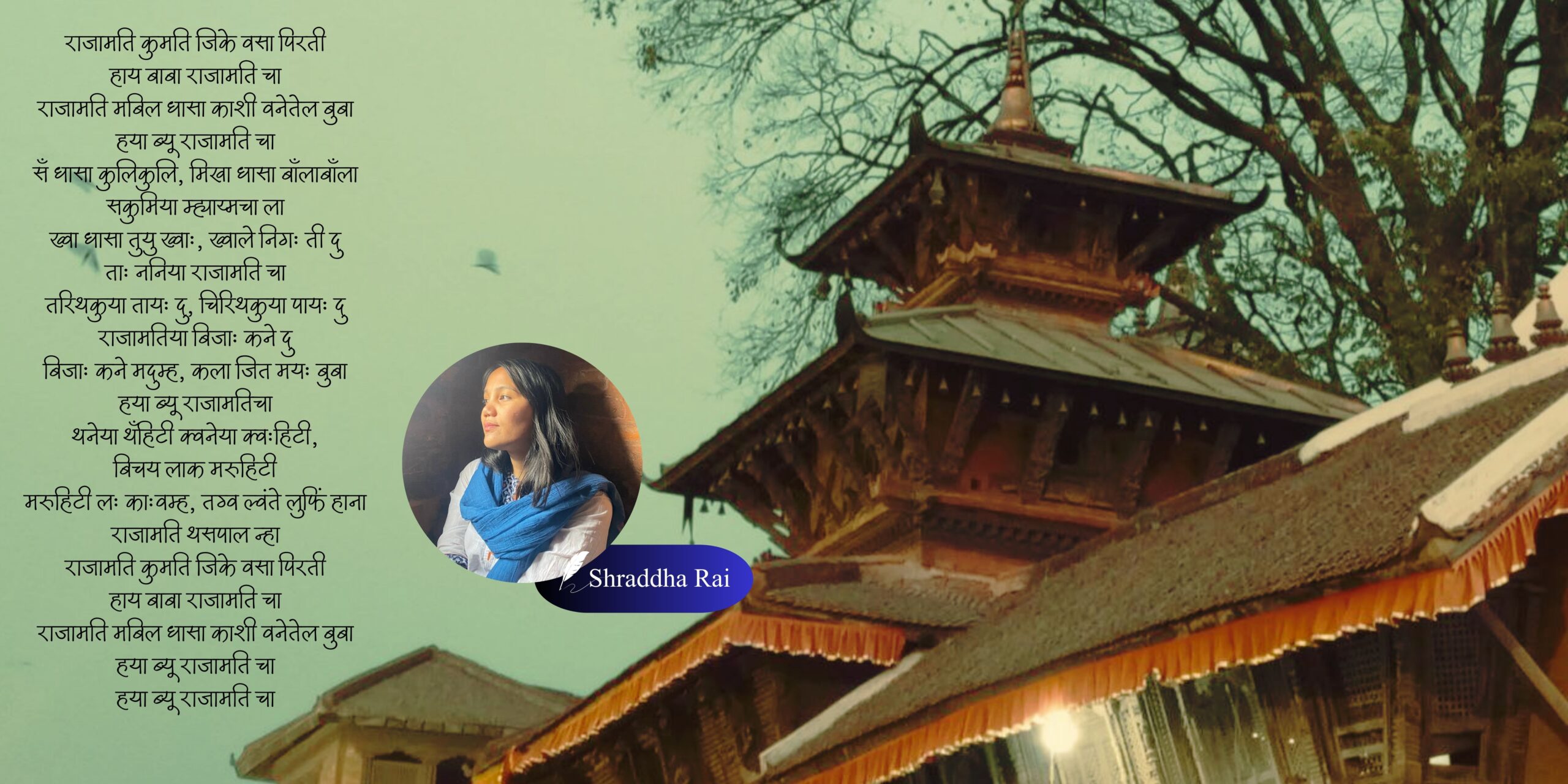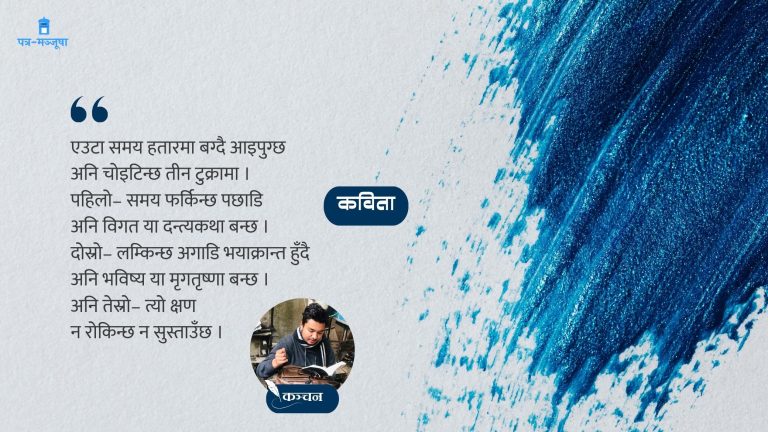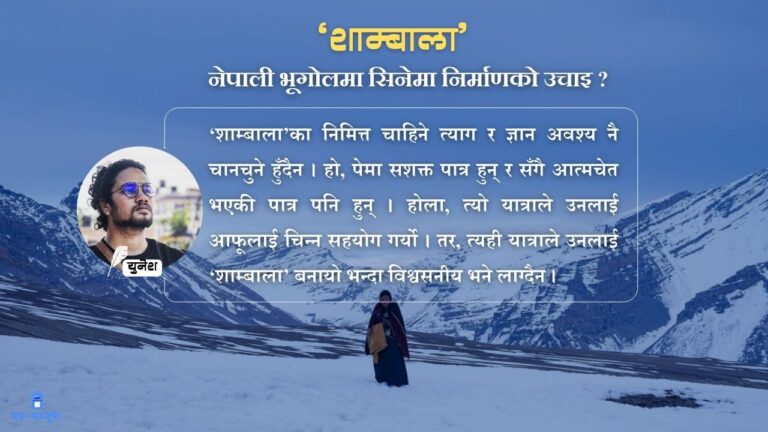In the heart of Kathmandu’s bustling Itum Bahal, where history whispers through the ancient brickwork and traditions echo in every courtyard, resides the enduring tale of Rajamati. This beloved figure, whose beauty and charm have transcended centuries, is immortalized in a traditional Newari ballad that not only resonates deeply within the ‘Newa’ community but also holds a place of cultural prominence beyond its borders.
Born into a humble family in Taha Nani, Rajamati’s allure and charm were known far and wide. Suitors from all corners of Kathmandu were captivated by her, drawn not only to her physical beauty but also to the gentleness of her spirit and the kindness in her eyes. It is said that Rajamati’s presence illuminated the narrow streets of Itum Bahal like the glow of oil lamps in the dusk.
The song of Rajamati, composed around 200 years ago by an unknown poet, paints a poignant picture of unrequited love and admiration. Composed with heartfelt emotion, the song begins with the yearning plea of an infatuated admirer who declares his undying love for Rajamati. He vows to renounce all worldly pleasures and even contemplate a life of asceticism in Kashi if he cannot marry her.
“Rajamati kumati, if you come to me I will give you my love
Oh dear Rajamati.
If Rajamati is not given to me, I will go to Kashi, father
Bring me dear Rajamati.”
His verses vividly describe Rajamati’s attributes – her curly hair, beautiful eyes, fair complexion, and the two distinctive moles adorning her cheek.
Beyond the poetic declarations of love, the song delves into the poignant episode of Rajamati’s life when she went to fetch water from the renowned water spout at Maruhiti. In a moment of misfortune, she stumbled upon a large stone and fell flat on her back, an incident that became part of her enduring legend.
Despite its age, the song has evolved over time, gaining popularity through various renditions. It was first recorded in 1908 by Seturam Shrestha, a notable singer and composer of his time. However, it was the rendition by Prem Dhoj Pradhan in 1963 that propelled ‘Rajamati’ into modern consciousness, solidifying its status as a quintessential piece of Nepali musical heritage.
Cultural Context
Newari Language: The Newari language, also known as Nepal Bhasa, is integral to the cultural identity of the Newar community in Nepal. The lyrics of “Rajamati Kumati” are in Nepali Bhasa.
During a pivotal moment in history, the melody of “Rajamati” accompanied a guard of honor during Prime Minister Jung Bahadur’s 1850 state visit to England. Despite oppressive measures during the Rana rule, which sought to suppress indigenous languages like Nepal Bhasa, “Rajamati” persisted as a defiant symbol of cultural identity. The ban on these languages starkly contrasted with their rich musical traditions.
Maestro Seturam Shrestha immortalized “Rajamati” with the first gramophone recording in Kolkata in 1908, followed by Prem Dhoj Pradhan’s 1963 rendition on 78 rpm discs. These recordings safeguarded the essence of Newari language, preserving its melodic cadence against historical attempts at erasure.
Folk Song Tradition: Folk songs in Nepal are deeply rooted in everyday life, expressing themes such as love, nature, and social issues. They are often sung in community gatherings, festivals, and rites of passage, preserving cultural values across generations.
Despite the plethora of Newar folk ballads, “Rajamati” transcended its cultural origins to become widely embraced by communities across Nepal. It gained prominence through oral transmission, passed down through generations in communal gatherings, cultural festivals, and public performances. This method ensured its preservation and allowed it to reach diverse audiences.
Social Context and Values: The song reflects several social customs and values of the Newar community. References to parental approval (Father, bring me dear Rajamati) indicates the traditional role of parents in arranged marriages within the community.
Similarly, descriptions such as ‘curly hair’, ‘beautiful eyes’, and ornaments like ear ornaments (I do not want a wife without ear ornaments) signify the importance placed on physical appearance and status symbols in selecting a suitable partner. These details reflect aesthetic preferences and societal standards within the Newar community. Different types of other girls (“Tarhi Thakun”, “Chirhi Thakun”) and their attributes (like jewelry) are mentioned which indicates a subtle hierarchy or preference in marital choices based on social standing and material possessions, reflecting broader societal values. And the repeated insistence on Rajamati despite potential alternatives (I do not like Tarhi Thakun, Chirhi Thakun is not suitable) underscores the importance of commitment and devotion to one’s chosen partner, rather than settling for societal expectations.
The mention of rituals like fetching water from Maruhiti (She went to Maruhiti to fetch water) and the imagery of decorating with jewelry and playing flutes (Decorate her with jewelry, let flutes play) during weddings portray the rich cultural practices and ceremonial traditions associated with marriage celebrations in the Newar community.
The song “Rajamati Kumati” encapsulates various aspects of Newar social customs and values related to marriage, love, family dynamics, cultural practices, and community ties. It provides a glimpse into the cultural richness and intricacies that define relationships and societal norms within the Newar community.
Themes and Imagery In The Song
Love and Longing: At its core, the song revolves around profound feelings of love and longing. The protagonist’s yearning for Rajamati is palpable throughout the verses, expressed through repeated pleas and declarations of affection. This theme underscores the universal human experience of yearning for a beloved, transcending cultural boundaries.
Detailed Descriptions: Rajamati is portrayed through detailed physical descriptions, enhancing her allure and presence in the narrative. Her curly hair, beautiful eyes, fair complexion, and distinctive facial features (two moles) are highlighted, creating a vivid image of her in the listener’s imagination. The mention of specific adornments such as ear ornaments, anklets, and a locket serves as symbols of beauty, status, and cultural identity. These details not only add depth to Rajamati’s character but also underscore the protagonist’s preference for her over others who may possess similar physical attributes but lack these specific adornments.
Geographical and Historical Significance: The song “Rajamati” is deeply rooted in the geographical and cultural fabric of Kathmandu, Nepal, particularly resonating within the Newa community. The song mentions specific localities within Kathmandu, such as Itum Bahal and three distinct waterspouts: Thanhiti in uptown Kathmandu, Kwahiti at the southern end, and Maruhiti in the central area. Maruhiti, specifically noted in the song, is a central point near Kathmandu Durbar Square where Rajamati, while fetching water, reportedly tripped on a large stone and fell flat on her back. This incident, depicted poetically in the song, serves as a vivid example of how everyday activities intertwine with cultural narratives and folklore in the region.
In addition, a ‘Sakumi’ mentioned in the context of the song refers to a person from Saakhu, a locality known for its stewardship of Vihars (Buddhist monasteries). This detail adds another layer of local identity and cultural specificity within the broader Kathmandu Valley context.
Similarly, Kashi, mentioned in the song, holds profound cultural and spiritual significance in Hinduism. It is considered one of the oldest continuously inhabited cities in the world and is revered as a major pilgrimage site. The protagonist’s statement of going to Kashi if Rajamati is not given to him underscores the intensity of his emotions and highlights the cultural trope of seeking solace or fulfillment in distant sacred places during times of emotional turmoil.
Conclusion
In the harmonious echoes of “Rajamati Kumati,” Kathmandu’s cultural essence resonates through time. This revered ballad not only immortalizes Rajamati’s enduring charm but also encapsulates the profound social values and traditions cherished by the Newar community.
Across generations, its lyrical beauty and narrative depth continue to weave a narrative of love, resilience, and cultural identity, enriching Nepal’s cultural mosaic with each melodic verse. The song’s influence extends beyond music, as evidenced by the 1995 film adaptation titled ‘Rajamati’, which further cemented its place in Nepali popular culture, ensuring its enduring legacy in both oral tradition and cinematic storytelling.






